DMM Aneng AN870
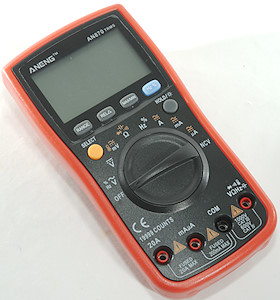
The brand Aneng has been on a lot of meters recently (in 2017), most of them very capable meters at very good prices, do this trend continue with this meter?
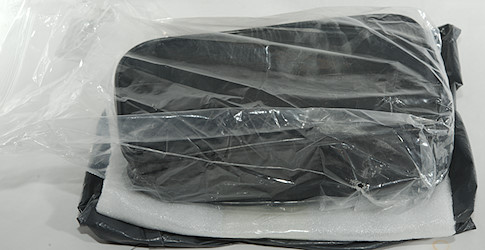
I got the meter in the usual black plastic bag with some protective wrapping around the pouch.
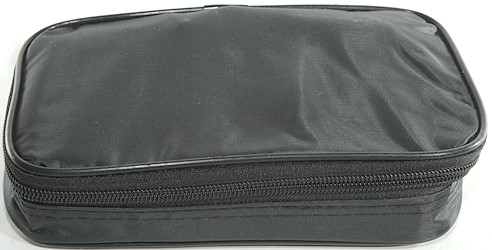
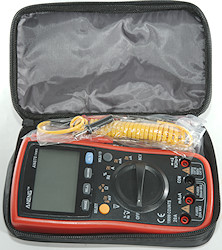
The pouch.
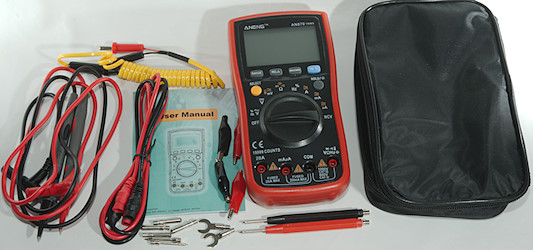
It included the DMM, a pair of normal probes, a pair of DIY probes, a thermocoupler and a manual.


The probes has removable tip covers, the tip and tip cover has the usual CAT markings, but there is not much markings on the probe them.
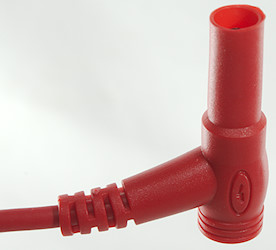
The shrouded plug is the slightly short variety.
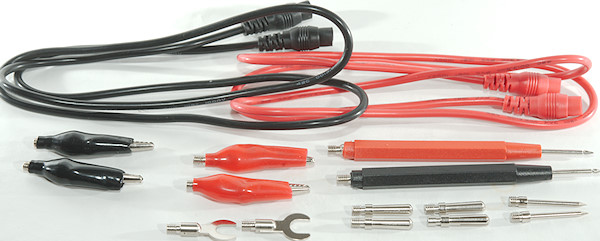
The DIY probe set, it is a bit low in quality and some work may be required to screw the tips in (One of the banana plugs was missing threads).
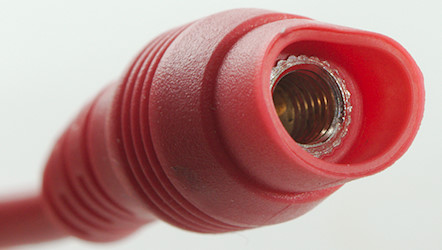
A end without any tip.





The DIY probes with the different tips.
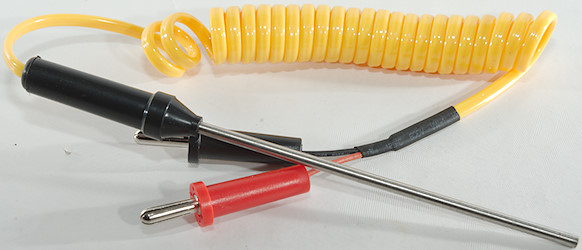


The thermocoupler is the probe type, this is useful for stuff where you want to stick the thermocoupler in, but not very good at measuring surface temperatures.
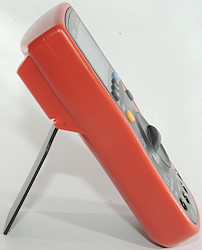
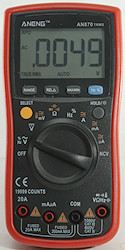
The range switch is a bit difficult to use single handed when meter is on the tilting bale, it slides around.
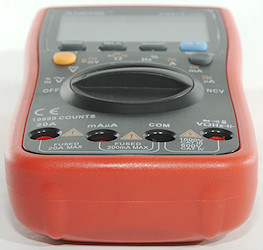
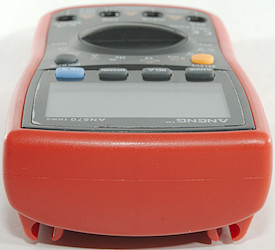
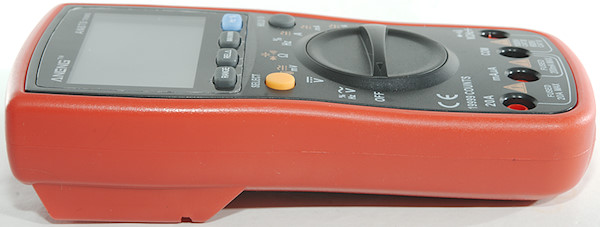
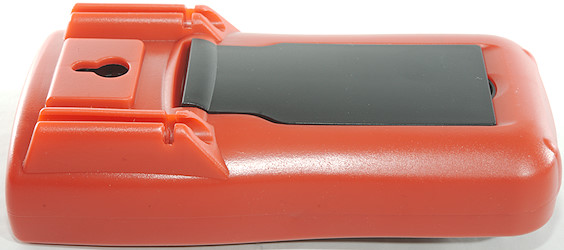
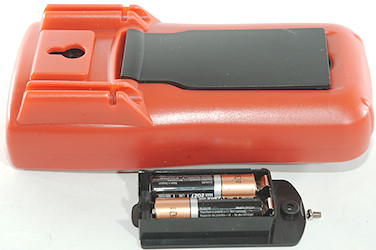
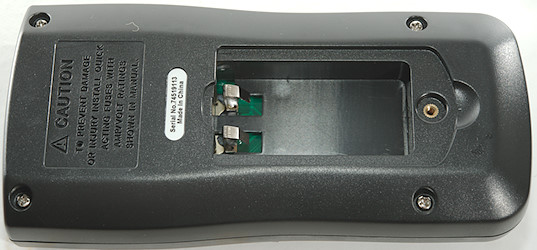
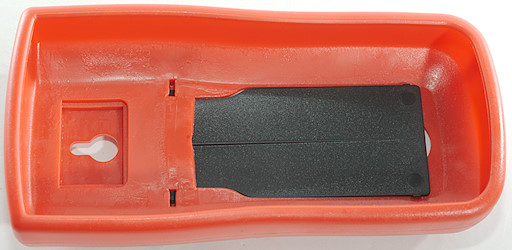
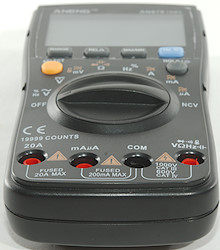
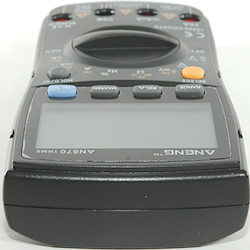
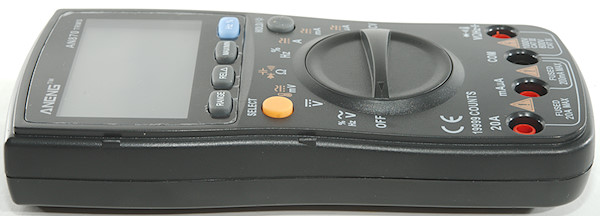
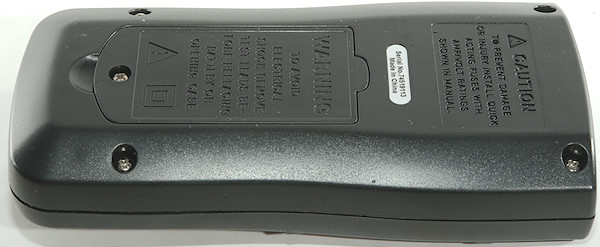
Display
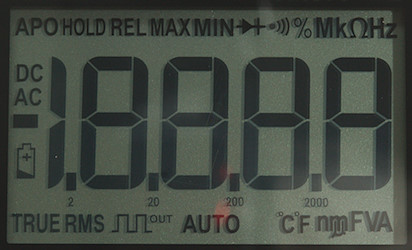
The above picture shows all the segments on the display, not all are used by this meter.
Notice the small 2, 20,200, 2000 digits, they are used to show the selected range.
The backlight has a hotspot at the minus sign, the rest of the display is fairly even illuminated.
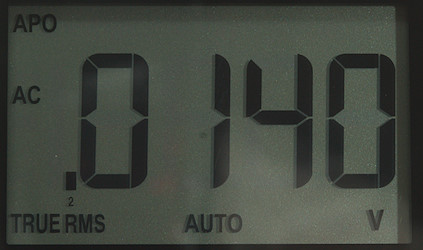
Typical display during usage, it will show the number and what measurement is selected.
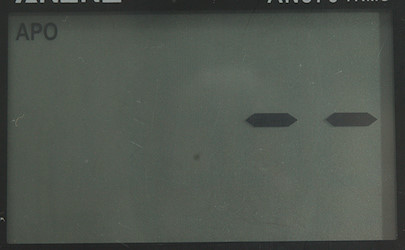
The NCV is the usual bars and the buzzer.
Functions
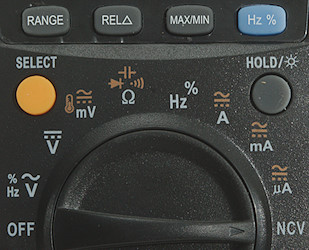
Buttons:
-
Range: Will disable auto range and change range, hold down to activate auto range.
-
Rel: Shows values relative to current value, will also select manual range. Press again to disable.
-
Max/min: Starts recording maximum and minimum value, press to select between max/min.
-
Hz % (Blue): Shows frequency and duty cycle in AC ranges.
-
Select (Yellow): Select the ranges printed with yellow and between C°/F°
-
Hold: Freezes the display, hold down for backlight.
REL and MAX/MIN will change to manual range and return to auto range when disabled.
Rotary switch:
-
Off: Meter is turned off
-
VAC: Show AC voltage, using the blue button frequency and duty cycle can be selected.
-
VDC: Show DC voltage.
-
mV: Show DC or AC mV and temperature. In AC the blue button will show frequency and duty cycle.
-
 : Resistance, continuity, diode and capacity.
: Resistance, continuity, diode and capacity. -
Hz: Logical frequency and duty cycle (Use blue button to change between them).
-
A: Current AC and DC. In AC the blue button will show frequency and duty cycle.
-
mA: Current AC and DC. In AC the blue button will show frequency and duty cycle. Watch out for burden voltage.
-
uA: Current AC and DC. In AC the blue button will show frequency and duty cycle.
-
NCV: Non-contact voltage or electric field detection.
Input
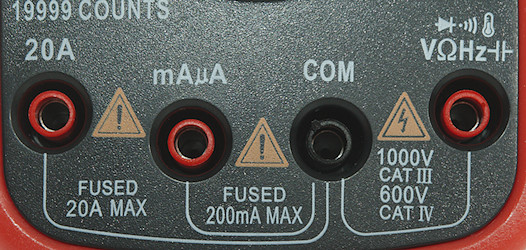
-
20A: High current, it can only withstand 20+ ampere for a short time due to heat (Fuse is 20A).
-
mAuA: The lower current ranges, the selector switch will change between two different shunts (Fuse is 200mA).
-
CON: The common terminal for all ranges.
-
xxx: All other ranges.
Measurements
-
Volt and frequency
-
At 100mVrms input frequency range is from 1Hz to 5.6MHz
-
At 2Vrms input frequency range can be stretched to 20MHz
-
Max/min needs about 360ms to capture a voltage with repeating pulses.
-
1 VAC is 5% down at 2.1kHz (RMS will not work at the frequency).
-
Frequency counter and duty cycle can only be selected in AC ranges.
-
Frequency input requires a zero crossing.
-
Duty cycle works from 2% to above 99% at 100kHz with 1Vpp, precision is within 0.2 (Mostly 0.1).
-
Input impedance is 10…11Mohm on DC and AC
-
mV range is high impedance for DC up to around 1.5 volt where it drops to a few kOhm. AC is similar, but capped at 10Mohm
-
Frequency input is 10Mohm up to around 2 volt, then the protection clamps to 2kOhm
-
-
Current
-
Frequency counter and duty cycle can only be selected in AC ranges.
-
200mA current is protected by a 0.2A/250V 6x30mm fuse.
-
20A current is protected by a 20A/250V 6x30mm fuse.
-
The 20A range has an audible alarm at 10A.
-
-
Ohm, Continuity, diode and capacity
-
Ohm needs about 2.8s to measure 100ohm
-
Ohm is 1V open and 0.37mA shorted
-
Continuity is fast (About 20ms).
-
Continuity beeps when resistance is below 50ohm.
-
Continuity is 1V open and 0.37mA shorted
-
Diode range uses 3.2V, max. display is 3.000V at 0.13mA, max. current is 1.6mA shorted
-
10uF takes about 4.5 seconds to measure.
-
70000uF takes about 9 seconds to measure.
-
Overload protection is not rated
-
-
Miscellaneous
-
Current consumption of meter is 1.2 to 2mA depending on range (AC adds 0.4mA), with backlight it is up to 9mA.
-
Meter works down to 2.2V where it turns off, battery symbol show at 2.4V.
-
Reading do not change with battery voltage.
-
Backlight only works down to about 2.6V where it is fairly dim.
-
The meter usual need a couple of display update to reach the final value.
-
Viewing angle is good.
-
Display updates around 3 times/sec
-
Backlight will automatic turn off in about 120 seconds.
-
Will automatic turn power off in about 15 minutes.
-
Standard probes cannot be pushed fully down they are a bit loose.
-
Weight is 374g without accessories, but with rubber sleeve and batteries.
-
Size is 180 x 89 x 44mm with rubber sleeve.
-
-
Probes
-
Probe resistance 33mOhm for one.
-
Probe wire is soft and 78cm long.
-
DIY probes resistance is 51mOhm
-
DIY probe wire is 86cm long
-

A look at the capacity measurement waveform.

Frequency input resistance depends on input voltage. This is fairly similar to mVAC input.

The meter cannot be used at 20A, the reading will drift (At 19A 5% drift in 13 seconds). At 10A the drift is still present, but much slower.
AC input cannot handle large DC offset.
Tear down
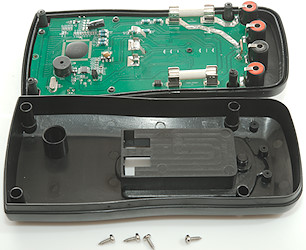
Four screws and the back could be removed.

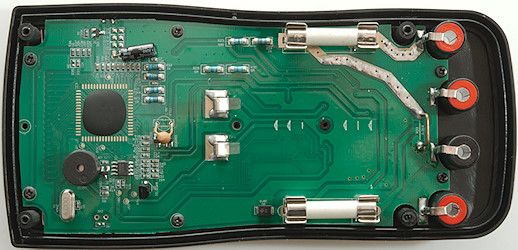
The circuit board is shaped to follow the box.
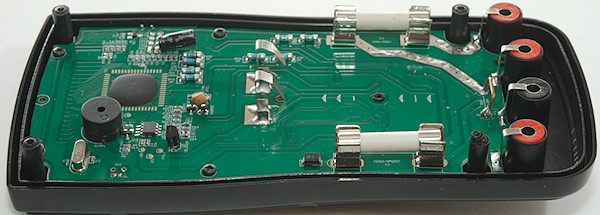
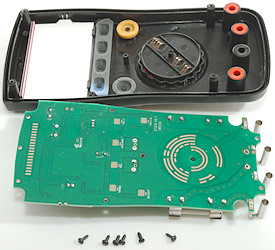
6 small screws and the circuit board was nearly loose, I had to unsolder the backlight to get it out.
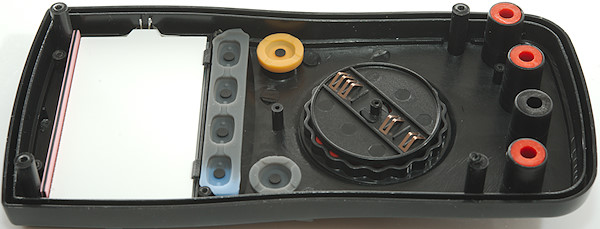
The display and backlight are still in the box-
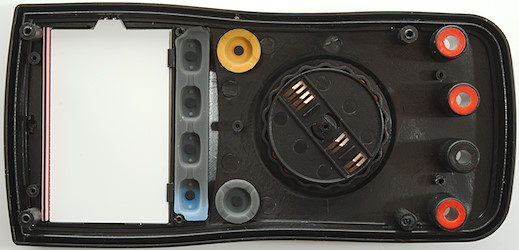
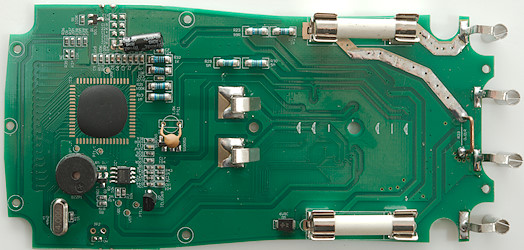
The 20A shunt (R33: 0.01ohm) is very small, it is no wonder it cannot handle 20A without getting hot, or is it the copper trace. Sense is connected to the uA shunt (R23: 99ohm). The mA shunt (R24: 1ohm) is next to the uA shunt. On opposite side of the circuit board is the mAuA fuse and a transient diode (D5: 6V8) to protect the resistors until the fuse blows.
The 10Mohm input is done with two resistors (R29 & R30: 2x5Mohm) and goes directly to the chip. For the ohm, capacity, frequency and mV input the input goes to a PTC (PTC1: 1.5Kohm) and a transistor pair (Q3 & Q4).
The multimeter IC (IC3) has a external EEPROM (IC1: P24C02A) for calibration and functions, there is also a reference IC (Q5: ICL8069). There is a transistor for the buzzer (Q2) and for the backlight (Q1).
At the top of the circuit board is a trace as antenna for the NCV, it has some high ohmic resistors (R37, R38, R39: 3x20Mohm) as load.
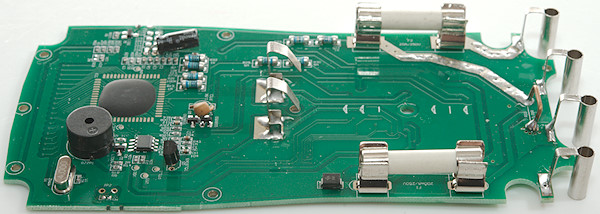

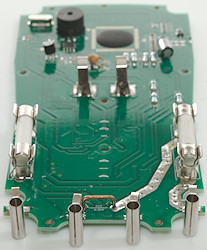
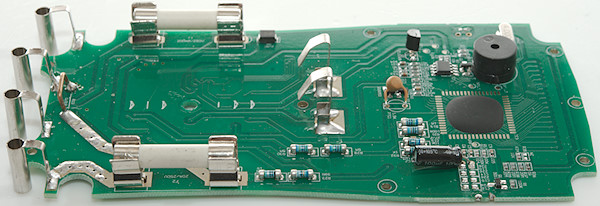
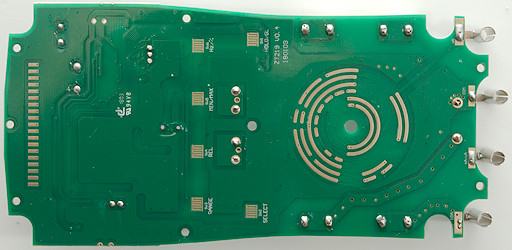
This side of the circuit board only has contact pads for the switches, range selector and LCD display. The 20A trace is also present in this side, but it is not enough for 20A.
Conclusion
The meter is within the specified tolerances (Except 20A range) and it has lot of functions and ranges, but the CAT rating is fake.
It is a fairly good meter to use on the bench.
Notes
The multimeter was supplied by Banggood for review.
How do I review a DMM
More DMM reviews

